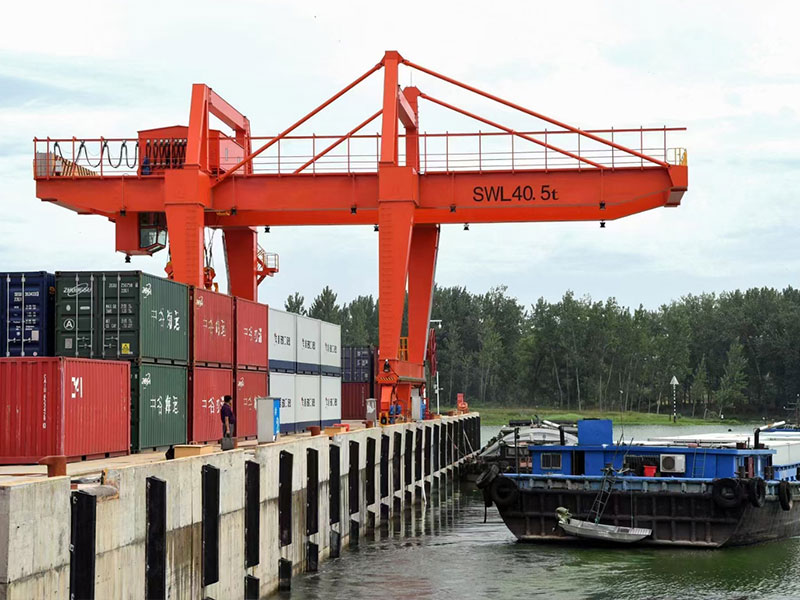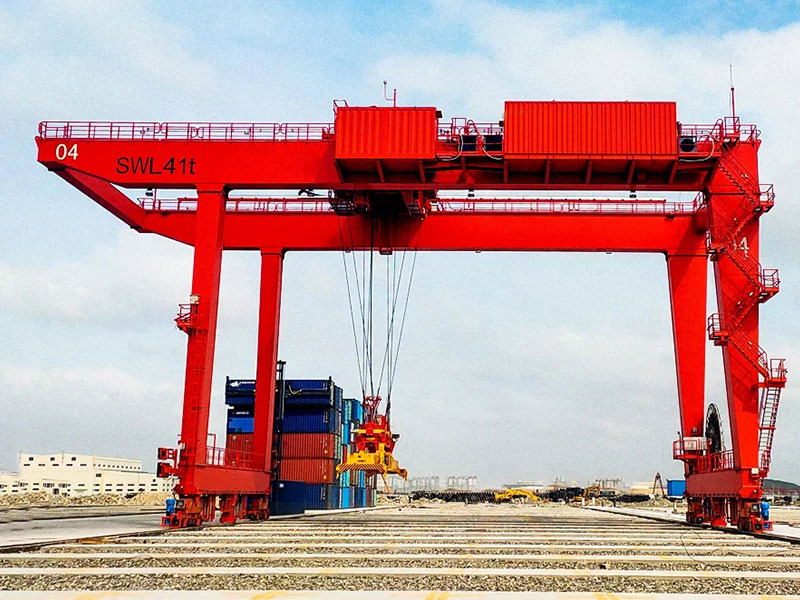Gantry cranes are indispensable in container handling operations, providing unmatched efficiency and reliability in ports, intermodal terminals, and storage yards. Selecting the right gantry crane requires a thorough understanding of its capabilities, applications, and the factors that impact its performance. This guide will explore essential considerations when purchasing a gantry crane for container handling, helping you make an informed decision.

1. Types of Gantry Cranes for Container Handling
The first step to buy gantry crane is understanding the various types available for container handling:
Rail Mounted Gantry (RMG) Cranes
RMG cranes are widely used in ports and rail terminals. They operate on fixed rails and are ideal for handling high container volumes efficiently. Their features include:
- High lifting capacities and spans.
- Precise control for stacking and loading containers.
- Advanced automation options to improve productivity.
Rubber Tyred Gantry (RTG) Cranes
RTG cranes are mobile, running on rubber tires, making them highly versatile for container yards. Key benefits include:
- Ability to work across different areas without fixed rails.
- Multiple steering modes for maneuverability.
- Options for hybrid or electric power for reduced emissions.
Straddle Carriers
While not a traditional gantry crane, straddle carriers handle container stacking and transport efficiently. They are ideal for facilities with limited space.
2. Key Specifications to Consider
When buying a gantry crane for container handling, focus on the following specifications to match your operational needs:
Lifting Capacity
The crane’s capacity should accommodate your heaviest container loads, including fully loaded 40-foot containers. Typical capacities range from 20 tons to over 100 tons.
Span and Height
- Span: The width of the crane determines how many container rows it can cover.
- Lifting Height: Ensure the crane can stack containers to the desired height, commonly up to six or seven containers high.
Work Duty and Speed
Choose a crane with a work duty classification that matches your operational intensity. High-speed hoisting and trolley travel ensure quick container handling.

3. Advanced Features and Technology
Modern gantry cranes are equipped with advanced technologies that enhance efficiency and safety:
Anti-Sway Systems
These systems minimize load sway, enabling precise container placement and reducing cycle times.
Remote Control and Automation
Operators can control cranes remotely, or fully automate operations to reduce labor costs and improve accuracy.
Energy Efficiency
Energy-saving features like regenerative drives and hybrid power systems lower operational costs and reduce environmental impact.
4. Site Requirements and Environmental Considerations
Before purchasing a gantry crane, assess your site’s specific needs and constraints:
Space and Layout
- The RMG cranes require fixed rails, so the yard layout must accommodate their installation.
- The RTG cranes are better suited for facilities with flexible layouts or uneven ground.
Environmental Factors
- Ports near residential areas may need cranes with low-noise and emission-free operation.
- Wind and weather conditions may affect the crane’s stability and design requirements.
5. Customization Options
Many gantry crane manufacturers offer customization to meet unique operational requirements. Consider these options:
- Cantilever extensions for handling containers outside the crane’s span.
- Adjustable spans or modular designs for scalability.
- Special materials or coatings for corrosion resistance in coastal environments.
6. Cost Considerations
The cost of a gantry crane depends on factors like type, size, and features. While it’s tempting to prioritize upfront costs, consider long-term benefits:
- Lower maintenance costs with high-quality components.
- Energy-efficient systems that reduce operational expenses.
- Reliable after-sales service for minimal downtime.
Investing in a crane with advanced automation and durability pays off by improving productivity and reducing overall costs.
7. Choosing the Right Supplier
A reliable gantry crane supplier ensures the quality, performance, and support you need. Look for the following qualities in a supplier:
- Experience and Expertise: Choose a supplier with proven expertise in container handling systems.
- Custom Solutions: The supplier should offer tailored solutions for your operational challenges.
- After-Sales Service: Ensure they provide maintenance, spare parts, and online or on-site installation support.
8. Compliance with Standards and Regulations
Ensure your gantry crane complies with international and local safety standards. Key certifications to look for include:
- ISO standards for crane design and operation.
- Compliance with environmental regulations for emissions and energy efficiency.
9. Future-Proofing Your Investment
Container handling operations are evolving with growing volumes and technological advancements. Choose an RTG or RMG crane that adapts to future demands:
- Scalable designs for increasing container volumes.
- Integration with smart port technologies like IoT and predictive maintenance.
- Modular systems that accommodate upgrades.
Conclusion
Buying a gantry crane for container handling is a significant investment that requires careful planning and consideration. By understanding the types of gantry cranes, evaluating site requirements, and selecting advanced features, you can ensure optimal performance and efficiency. Partnering with a reputable supplier who offers customization and comprehensive support further guarantees a smooth and successful operation.
With the right gantry crane, your container handling operations can achieve new heights of productivity and reliability.